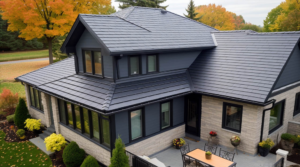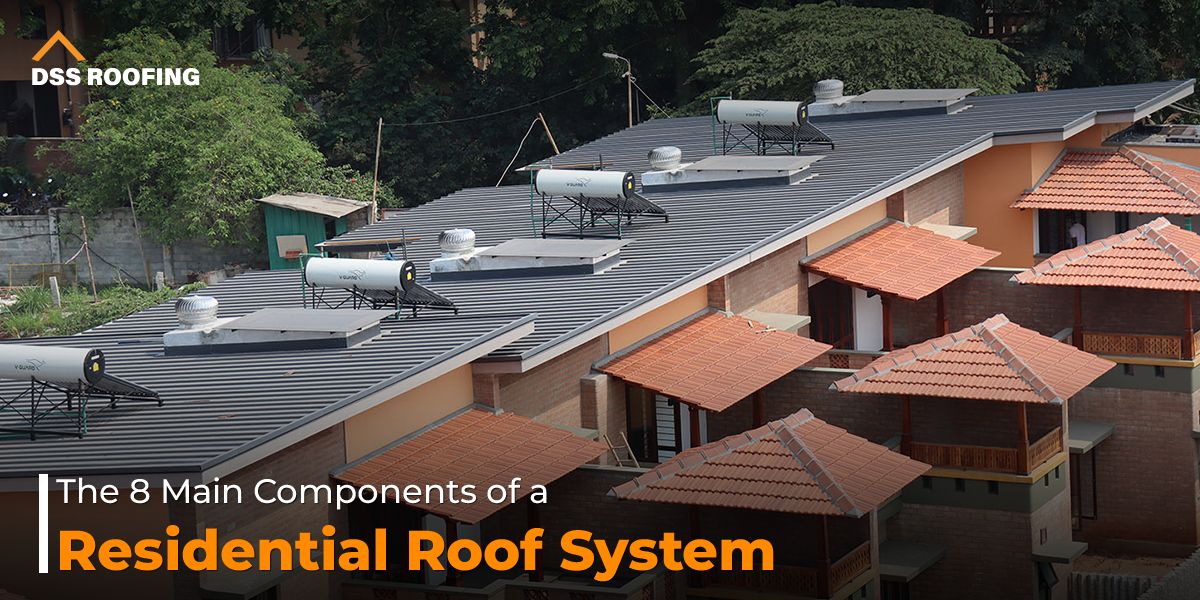The 8 Main Components of a Residential Roof System

A roof isn’t merely the top of your house; it functions as a sophisticated system engineered to safeguard and insulate your home. Think of it as a defensive gear, providing crucial protection and ensuring that everything beneath remains secure. Key components of a residential roof system include shingles, underlayment, flashing, and ventilation, each playing a vital role in its effectiveness. Therefore, to fully understand and maintain this essential part of your home, consulting professional roofers in New York can provide expert guidance and ensure your roof performs at its best.
Read on and dive into the eight main parts that make up this protective armor.
Essential Components of Residential Roof:
A list of important components of residential roof systems are:-
The Framework: Rafters and Trusses-
The backbone of any roof system is its framework. Rafters and trusses form the skeletal structure that supports everything else. Think of rafters and trusses like the bones of your body; without them, nothing else would hold its shape.
On the other hand, rafters are the traditional, sloped beams that run from the peak of the roof to the eaves. They provide the basic shape and support for the roof. Trusses, on the other hand, are pre-fabricated, triangular units that provide additional support and distribute the weight of the roof evenly.
Decking: The Foundation Layer-
Decking, or sheathing, serves as the essential layer covering the framework of your roof. Typically attached directly to the rafters or trusses, it consists of plywood or oriented strand board (OSB). moreover, the decking provides a solid base for attaching other roofing materials and offers crucial structural support.
Underlayment: The Hidden Protector-
Underneath the shingles lies the underlayment, an unsung hero in the roofing system. This layer is like the inner lining of your jacket, providing additional protection against water and weather. Also, the underlayment is typically made from felt or synthetic materials and acts as a barrier to prevent moisture from seeping into the decking.
Shingles: The First Line of Defense-
The most noticeable component of your roof, shingles act as your main barrier against the weather. They come in various materials, including asphalt, wood, metal, and slate, each offering different benefits and aesthetic options. Additionally, shingles are helpful in repelling water, withstand wind, and provide a durable outer layer that protects the underlying components.
Flashing: Sealing the Vulnerable Areas-
Flashing is like the seams in a well-tailored suit, ensuring that everything stays watertight. It consists of thin metal strips installed around roof features such as chimneys, vents, and skylights. Flashing prevents water from seeping into joints and crevices, protecting these vulnerable areas from leaks.
Gutters: Directing Water Away-
Water must be directed away from your house via gutters and downspouts. Without them, rainwater would simply cascade off the roof, leading to potential flooding and foundation damage. Gutters collect water from the roof and channel it through downspouts, directing it safely away from the house.
Ventilation: Keeping It Cool-
Proper ventilation is essential for maintaining the health and efficiency of your roof. It helps regulate temperature and moisture levels in the attic, preventing problems like mold growth and ice dams. Moreover, ventilation systems include intake vents (usually located under the eaves) and exhaust vents (often placed near the roof ridge) to ensure a steady flow of air.
Insulation: Maintaining Comfort-
Insulation works hand-in-hand with ventilation to keep your home comfortable. It acts like a thermal barrier, keeping warm air inside during the winter and cool air in during the summer. Proper insulation can significantly impact your energy bills and overall comfort by maintaining consistent indoor temperatures.
Reasons to Consult With Professionals:
Consulting with professional roofers is essential for several reasons:
Expertise and Experience-
Professional roofers have the knowledge and experience to handle a wide range of roofing issues. They understand the complexities of different roofing systems and materials. Therefore, ensuring that any roof repair buffalo ny or installation is done correctly and safely.
Proper Tools and Techniques-
Roofing requires special tools and techniques that professionals get training to use. This ensures that they work efficiently and to a high standard. Therefore, reducing the risk of future problems.
Safety-
Roofing can be dangerous, especially for those without proper training. Professional roofers are equipped with the necessary safety gear and know-how to perform the work without risking injury.
Quality Materials-
Experts possess superior resources that the general public might not have access to. They can recommend the best products for your specific needs, ensuring a longer-lasting and more durable roof.
Warranty and Insurance-
Professional roofing companies typically offer warranties on their work, providing peace of mind that any issues will be addressed. Additionally, they are insured, shielding you from responsibility in the event of mishaps or property damage while working on the project.
Compliance with Building Codes-
Roofing work must comply with local building codes and regulations. Professional roofers are familiar with these requirements and will ensure that your roof meets all necessary standards.
Cost-Effective-
While hiring a professional roofer might seem expensive initially, it can save you money in the long run. Properly installed and maintained roofs are less likely to develop problems, reducing the need for costly repairs or replacements.
To Sum Up:
Understanding the components of a residential roof system is like knowing the parts of a car engine. Together, these components, each of which is essential to the other, guarantee the overall longevity and effectiveness of your roof. Keeping these components in good condition helps in residential roof maintenance in new york and also allows you to extend the life of your roof and protect your home from the elements.
DSS Roofing specializes in high-quality roofing services, offering expert installation, repair, and maintenance for residential and commercial properties. With a focus on durability and customer satisfaction, DSS Roofing ensures top-notch craftsmanship and reliable solutions, making it a trusted choice for all your roofing needs.
FAQs:
- What are the most common materials used for residential roofing?
The most common materials include asphalt shingles, wood shakes, metal, and slate. Each offers different benefits in terms of cost, durability, and aesthetics.
- How often should I inspect my roof?
It’s recommended to inspect your roof at least twice a year, in the spring and fall. Additionally, you should check it after major weather events.
- What is the purpose of roof flashing?
Roof flashing seals joints and crevices, preventing water from seeping into vulnerable areas around chimneys, vents, and skylights.
- Why is roof ventilation important?
Proper ventilation helps regulate temperature and moisture levels in the attic, preventing mold growth and other issues that can compromise the roof’s integrity.
- Can I install a new roof over an existing one?
In some cases, it’s possible to install new shingles over an existing layer, but this depends on the current roof’s condition and local building codes. Always consult a professional roofer for advice.



